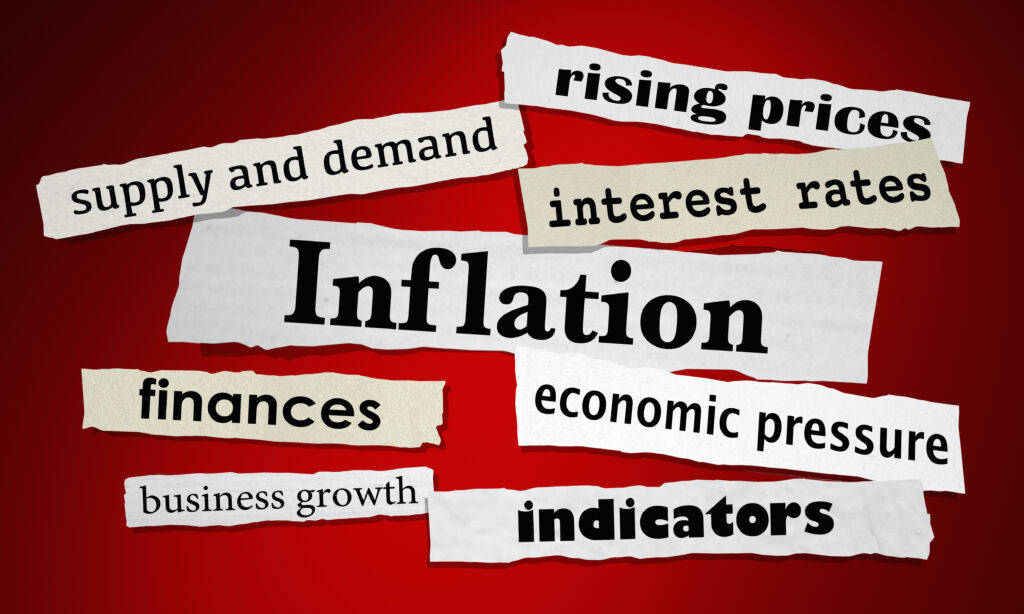
In July, the National Association of Manufacturers (NAM) posted a webinar on its website titled “Smart Responses to Inflation and Volatility for Manufacturing Leaders.”
A global management consulting company, Bain & Company, hosted the webinar at the end of June, and two of the company’s partners, Karen Harris and Jason Heinrich, presented. They analyzed the impact of rising inflation on U.S. manufacturers, and offered tips for reducing its risks.
In her analysis of U.S. inflation, Harris, whose specialty is macroeconomics, shared some historical data. Since World War II, she noted, the U.S. has had seven inflation spikes, each lasting between 23 and 47 months, with a median time frame of 30 months, before ending with (or during) a recession. If the past is any indicator of how long an inflation spike will last, Harris said we can expect our current spike, which began in March of 2021, to end around September of 2023.
“Recessions break inflation cycles,” she said, “and then we see a drift back down to a normal inflationary environment.” Given that Harris predicts at least another year of high inflation, her colleague, who specializes in business performance improvements, offered his strategies for managing its risks.
“Today’s inflation presents significant risks for businesses,” Heinrich explained. They’re seeing declining gross margins as the Cost of Goods (COGS) skyrockets, along with rapidly increasing labor and energy costs. They’re seeing an increasing cost of capital due to the federal government raising loan rates. Their customers are becoming more price sensitive, and they’ll look for cheaper options, which is another threat to businesses.
Bain & Company researched the activities of 3,900 companies over the past 13 years to see why some companies outperformed during times of inflation while others failed. “Businesses that are playing offense during periods of disruption outperform their industry peers over a long period of time,” Heinrich said, before offering these six strategies:
1. Elevate the role of the CFO to C-suite quarterback. The CFO must play a central role in connecting the front end of the business to the back end. The CFO must determine how to translate rising costs into price increases to customers. The CFO must determine the increase rate. Best in class CFOs will arm their sales and marketing teams with the rationale for price increases, so they can explain it to customers.
2. Double down on customer relationship building. Inflation typically reduces customer loyalty, so it’s time to focus on contract renewals and renegotiations. Identify potential defectors, and focus on them before they leave for a competitor. Develop compelling new offers targeted toward acquiring new customers who are out shopping for a better deal. Invest in digital marketing to reach them at the right place and time. Selectively absorb some cost inflation for your most loyal, price sensitive customers.
3. Pricing strategy is important. Exchange price for value by offering other benefits, such as volume guarantees, bundled products and adjusted service levels. When necessary, pass on surcharges for customer behaviors that reduce profits. Equip the sales team to dynamically adjust customer pricing based on different market scenarios. Utilize index-based pricing in raw material contracts.
4. Build resilient, growth-focused procurement and supply chain operations. Consider reconfiguring your supply chain due to increasing transportation costs.
5. Prioritize automation. Identify opportunities, and develop automation targets with a multi-year roadmap. Share automation best practices throughout the company.
6. Invest to build the best workplace. Retaining employees is a bigger challenge than attracting them. Reassess your total rewards package. Consider offering one-time lump sum payments to combat inflation, rather than implementing wage adjustments. Look for opportunities to cross train.
The webinar, which lasted just under an hour, ended with a strong Q & A session. You can register to watch it here.
Rising inflation has made this a turbulent time for manufacturers, and you need to have a plan. If you don’t have one, it’s a good time for a Needs Assessment. The Connecticut Manufacturers Resource Group (CTmrg.com), a subsidiary of Web Savvy Marketers, routinely conducts Needs Assessments to help companies prosper in times of economic uncertainty. Contact Us to learn more.